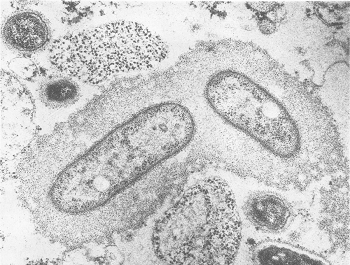Rickettsia prowazekii - Clinical manifestation, Lab Diagnosis
Clinical manifestation of Rickettsia prowazekii
The clinical manifestations of Rickettsia prowazekii include:
Endemic typhus
The incubation period of endemic typhus, caused by Rickettsia prowazekii, is around 8 days. Symptoms include high fever, severe headache, and chills. Other symptoms include petechiae, while the macular rash appears on the truck and spreads to extremities such as the face, palm, and sole. If the disease is left untreated, stupor and delirium develop.
Complications include myocarditis and CNS dysfunction. The fatality rate is at 40 % or more.
Relapsing fever
Relapsing fever, caused by Rickettsia prowazekii, persists in lymphoid tissue. It can reemerge and cause typhus fever after months, years to decades after antibiotic treatment.
Some risk factors include Improper or incomplete antibiotic therapy, malnutrition, and poor general health.
It is less severe than epidemic typhus.

Fig: Rickettsia prowazekii microscopy (Source: ResearchGate)
Laboratory Diagnosis of Rickettsia prowazekii
The laboratory diagnosis of Rickettsia prowazekii begins with the collection of samples:
Specimen
Skin biopsy
serum
Culture
The culture of Rickettsia prowazekii is not widely used as difficult to culture (fastidious) and dangerous to lab personnel.
Serodiagnosis
Several methods of serodiagnosis are available for laboratory diagnosis of Rickettsia prowazekii.
Indirect fluorescence Ab test
Latex agglutination test
Enzyme Immunoassay
Toxin neutralization test
Molecular diagnosis
Molecular diagnosis of PCR detects Rickettsia prowazekii DNA in blood/tissue for early diagnosis.